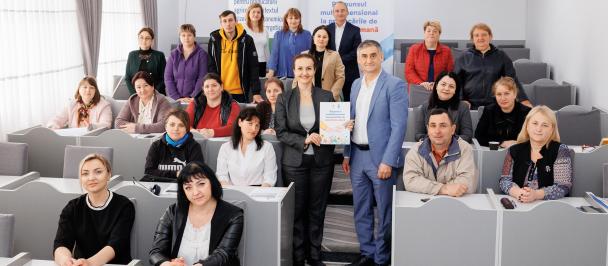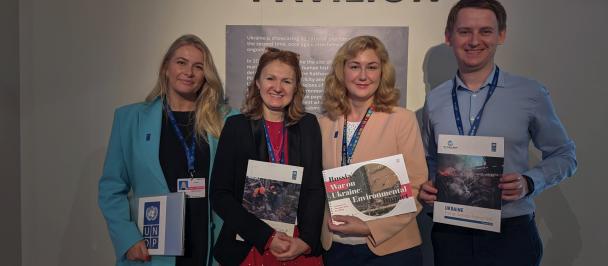Catalyzing Economic Growth and Sustainability: The Dry Fish Revolution in Bangladesh's Blue Economy
Experimenting the Potentials of Dried Fish in Bangladesh's Blue Economy: Expanding Local and International Market through Blue Tourism
December 31, 2023
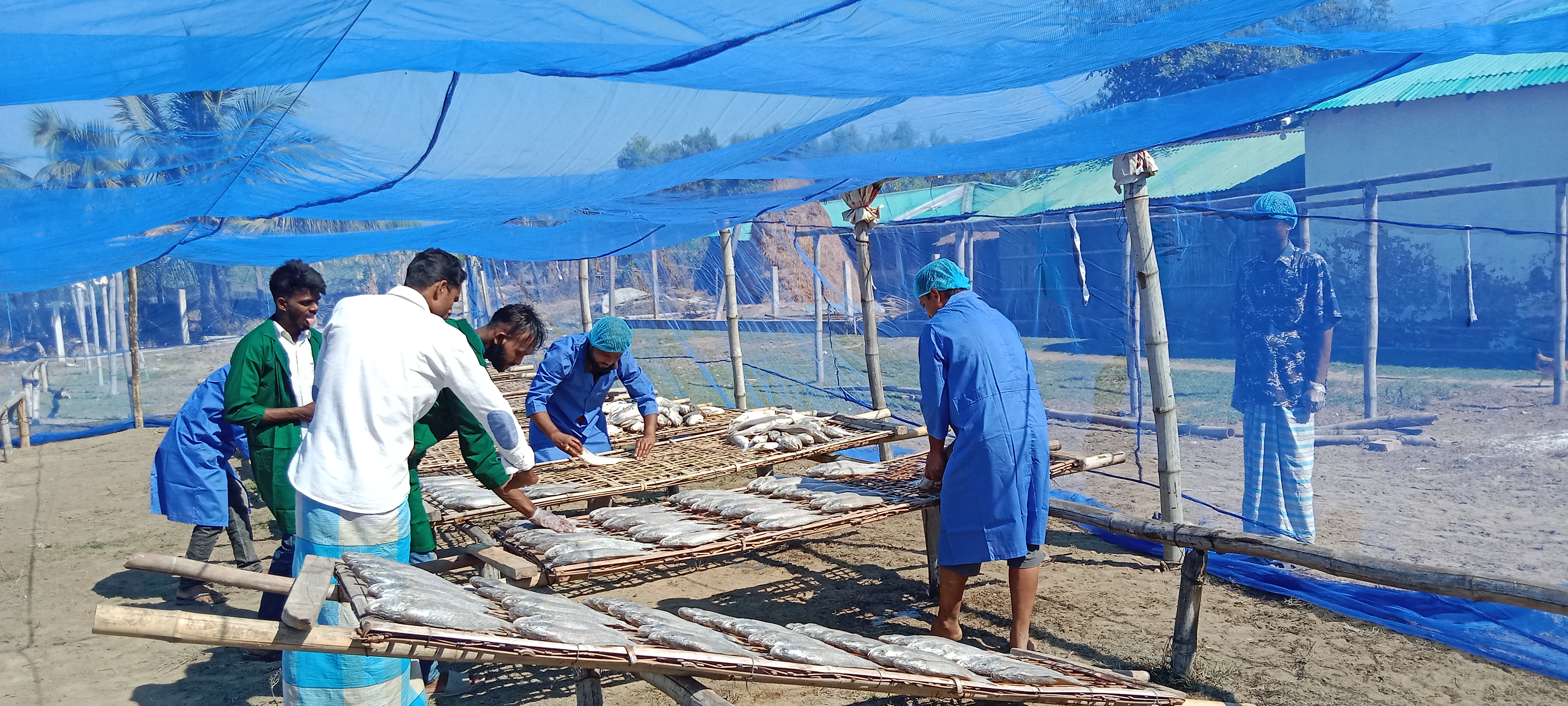
Dry fish producers are applying hygienic methods for processing dry fish
BY Ramiz Uddin, PhD., Head of Experimentation, UNDP Accelerator Lab, Bangladesh
Samiha Akter Sima, Experimentation and Innovation Associate, UNDP Accelerator Lab, Bangladesh
Bangladesh is a land of rivers and Bangladeshis are generally known as ‘Macch-e Bhat-e Bangali’ which means ‘Bengalis by fish and rice’. Being a genuine source of protein, the availability of different kinds of fish is meeting the demand of the larger population of the country. But fishes are extremely perishable and require preservation for future consumption. The Bangladeshi fish farming community especially the coastal belt fishers has been rich in fish drying heritage for several hundreds of years. The traditional way of fish preservation is sun drying which the consumers can relish in the off-season known as Shutki. Shutki is not only a special delicacy in Bengali cuisine, but also a genuine source of protein, minerals, and other food nutrients. Dried fish production has opened a window of opportunity by income generating to the coastal belt fishers and especially for the women.
20% of the 4.6 million metric tons of fish that Bangladesh produced in the 2020–21 season during COVID-19 was processed into dried fish. The number is overgrowing in recent times.
Source: https://www.tbsnews.net/thoughts/exploiting-immense-potential-safely-produced-dried-fish-633262
Food value alongside with health benefits of dry fish:
One kilogram of dried fish requires roughly two to five kilograms of fresh fish, depending on the species. Dried fish is a good source of high-quality protein because its nutrient density is three to four times higher than that of fresh fish. Dried fish have an amino acid content that is almost the same as that of eggs
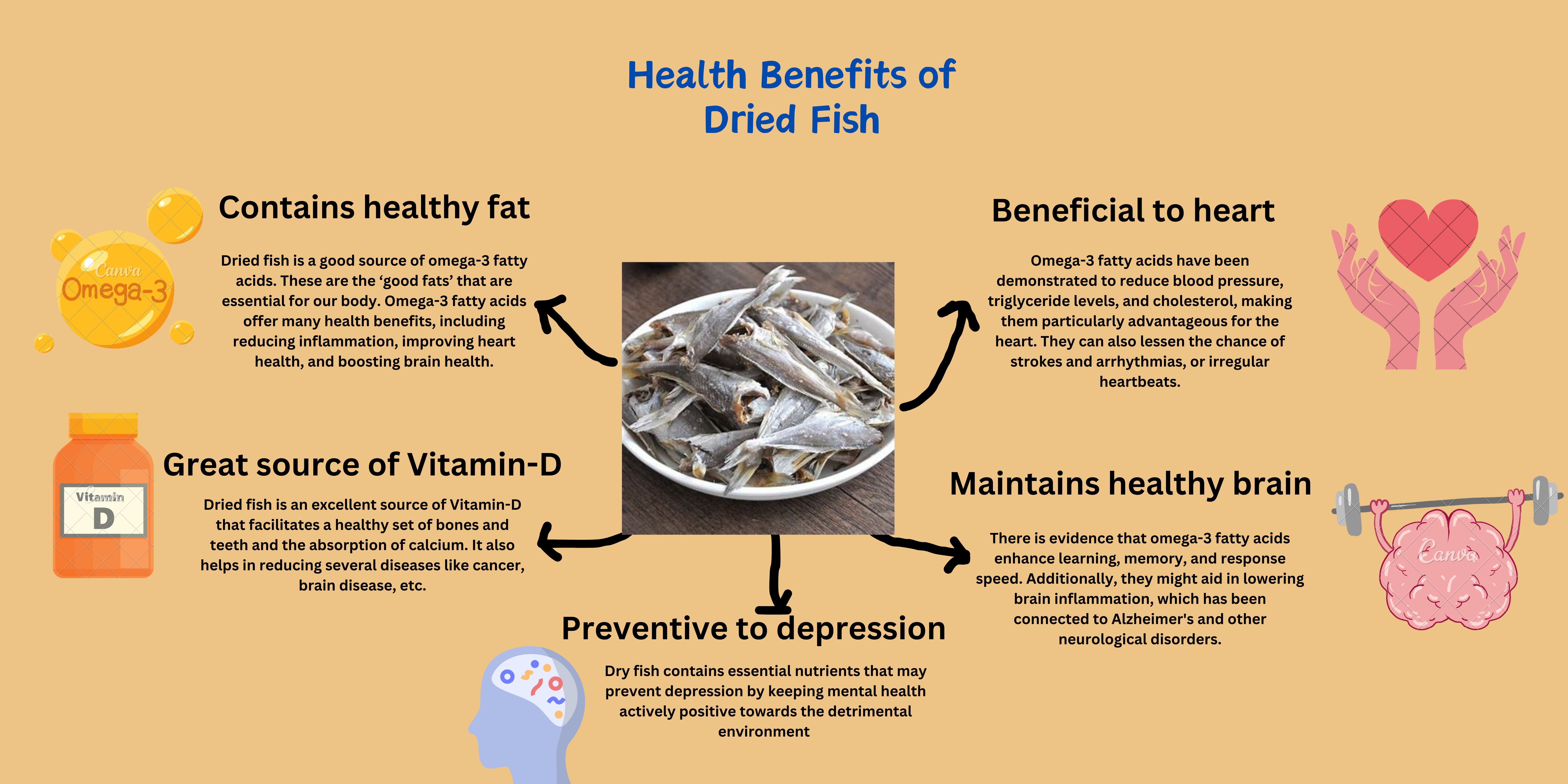
Infographic 1: Benefits of dried fish in our body. (Source: https://healthguide.ng/health-benefits-of-dried-fish/ )
However, when it comes to health safety and hygiene the traditional sundry approaches show the risk of insect or other microorganism infestation. Since the fish are sun-dried without a lid, they are exposed to pollution, germs, and sand. In addition, toxic chemicals and pesticides are often applied to prolong its freshness.
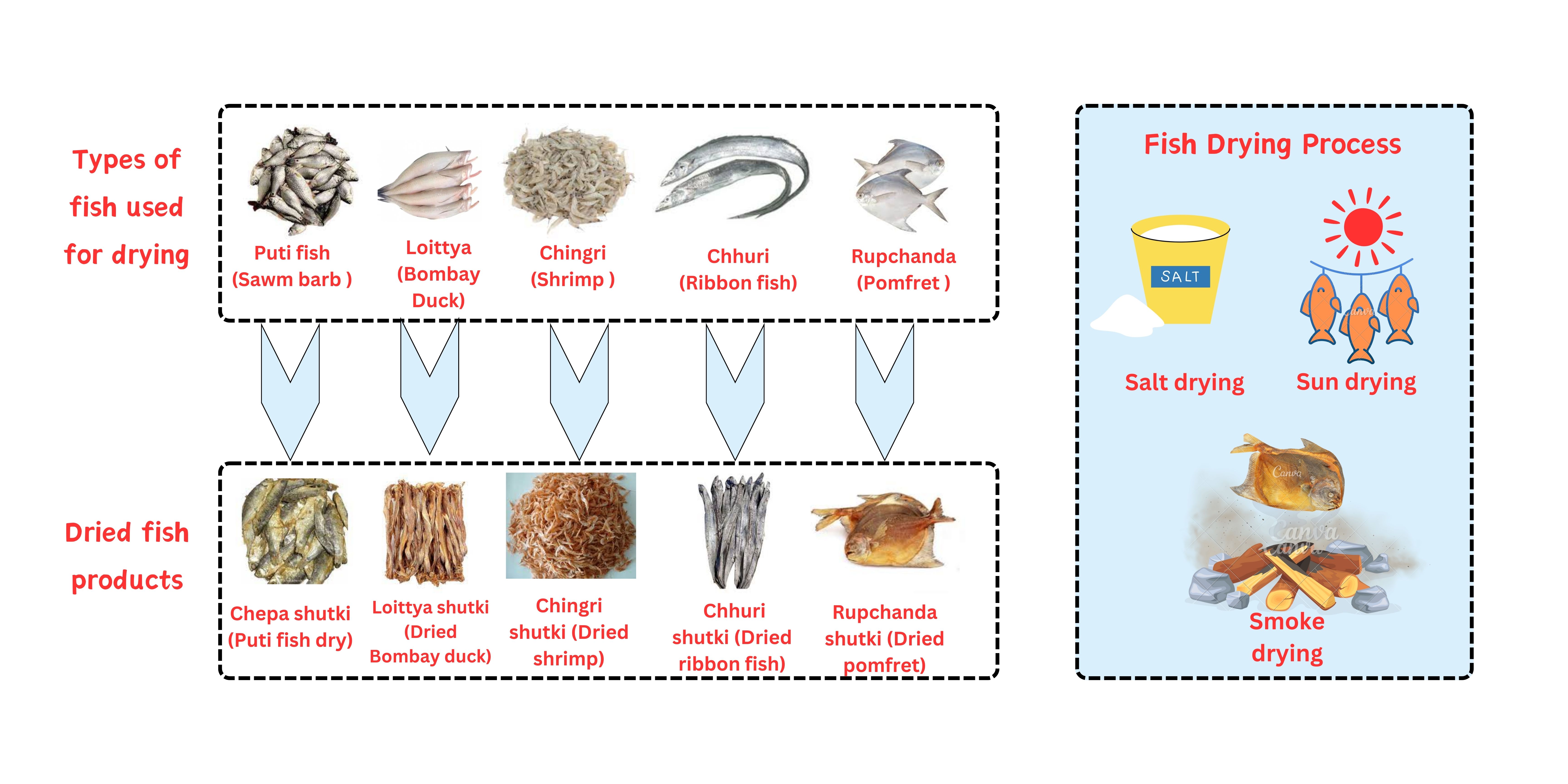
Infographic 2: Fish drying process
However, thanks to modern techniques, the traditional unhygienic practices have been reduced significantly. Initiatives taken by both public and private sectors are encouraging the fishermen to follow the healthier way of drying fish for the greater benefit of the community and the dried fish consumer.
Accelerating income through safe and hygienic fish drying mechanism:
UNDP has been working in the coastal region (Cox’s Bazar) for at least the last two decades through different projects on livelihoods, skilled development, community cohesion, and environmental conservation. There were also several initiatives on sustainable development, eco-tourism, and other aspects of the blue economy. UNDP and its Accelerator Lab have implemented a pilot project on the Blue Economy Component for Creating Economic Opportunities in Cox’s Bazar. This project has enabled the dry fish producers to adopt safe processing and production of dry fish in the Cox’s Bazar district.
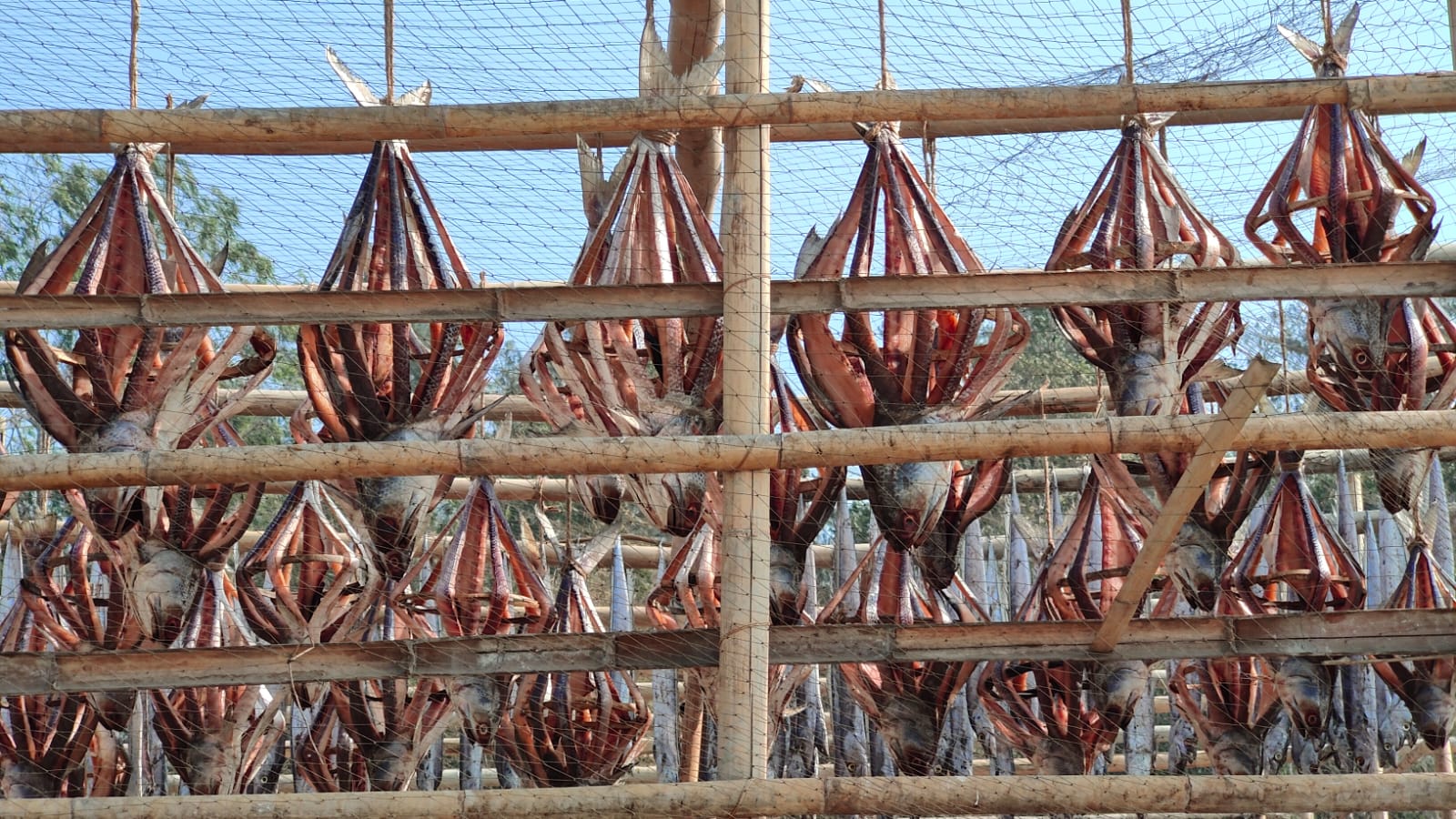
Fish sun-drying process under safety nets to protect it from strays.
The result of the pilot project is very impressive, and Dry fish beneficiaries are now producing and marketing organic and safe dry fish after receiving training and project support. In addition to these ventures, they formed the “Ocean King Dry fish group”, opened bank accounts, and the teamwork mentality is growing day by day. They have opened a Facebook page to attract online buyers. This project has connected all relevant stakeholders to the Oceanic component, including relevant stakeholders. District Administration, Sub-District Administration, and Cox's Bazar Development Authority etc. are contributing in terms of compliance and relevant guidance. Department of Fisheries, Bangladesh Fisheries Research Institute and Sea Food Processing Association etc. are well connected for technical guideline and consultation. Cox's Bazar Women Chamber of Commerce and Industry, Bangladesh Tourist Police, Bangladesh Tourism Board, Cox's Bazar Beach Management Committee, Tour Operators’ Association of Cox's Bazar (TOAC) and Tour Operators’ Association of Bangladesh (TOAB) etc. are also working together for promotion and development of the initiatives.
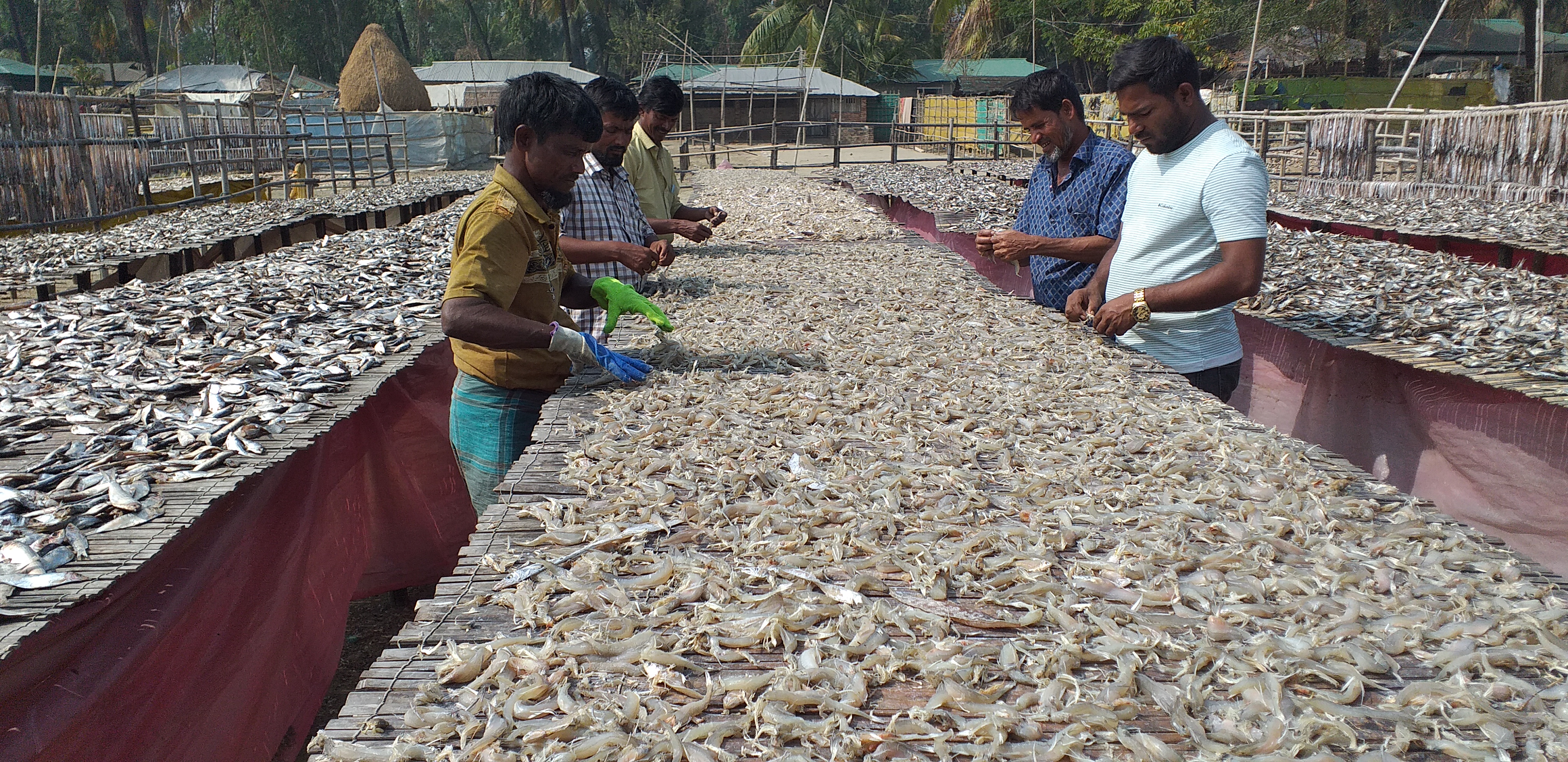
A group of dry fish producers in Cox’s Bazar checking the quality of products
Branding strategy for worldwide dry fish marketing:
A strong brand and marketing plan can help set the producers part from the competition and raise consumer awareness and demand for dry fish goods. Reaching out to new clients can also be facilitated by using digital channels such as social media (Facebook, YouTube, Instagram, and other online media). Developing connections with neighbourhood wholesalers, distributors, and retailers as well as working with local groups and governmental entities can help companies become more widely known and boost their sales.
Suggestive measures to make the dry fish industry a quick-grown blue economy product:
By generating foreign exchange and bolstering the local economy, dry fish can be a significant contributor to the country's economic development. By providing training and support, employers may ensure that their workforce has the skills and knowledge necessary to do their tasks effectively. The effects of natural disasters on businesses can be reduced by taking preventative and remedial action, such as creating backup plans and safeguarding storage facilities. Some other recommendations are as follows:
Technologically sound machinery: Purchasing contemporary machinery and technology can lower expenses, increase production effectiveness, and improve the dry fish's quality. This can assist in overcoming issues with low-quality goods and little competition.
Quality Control: Ensuring the freshness and cleanliness of fish from the point of capture to the point of sale requires stringent quality control protocols. This can involve checking for adequate drying, and keeping an eye on the temperature while storing, and hygienically processing food.
Easy access to finance: Fish farmers who have a limited asset or no assets to invest in fish drying should be incentivized by providing fish abundant in our seas and rivers. The impoverished fishermen would profit from easy access to low-interest loans from the government and private sectors, which would motivate them to participate in the production of safe dried fish.
Safeguarding our oceans for availability of seasonal fish: Providing a variety of dry fish products and obtaining fish from various sources can assist in overcoming difficulties brought on by supply constraints and seasonal variations. Hence, we must work hand in hand to protect the biodiversity of the seas and preserve our oceanic resources to help grow fish and other essential elements for ourselves. We must remember that if we take care of our seas, then the seas will take care of us.
All the successes and lessons learned in working with dry fish beneficiaries can be replicated on a larger scale to bring about significant changes in safe dry fish production, packaging, and marketing in Cox's Bazar, Saint Martin’s, Barishal, Khulna, and other parts of the country where fishes are readily available and accessible to the fishers. As a result, local producers will be able to produce quality products, the value of products will increase, and they will be able to capture the international market alongside the local market.
Celebrate the Sustainable Taste of Bangladesh! Join us in preserving the tradition of dried fish while promoting hygienic practices and eco-friendly solutions. Together, we can empower local communities and create a thriving blue economy.
Related
content
content

 Locations
Locations

